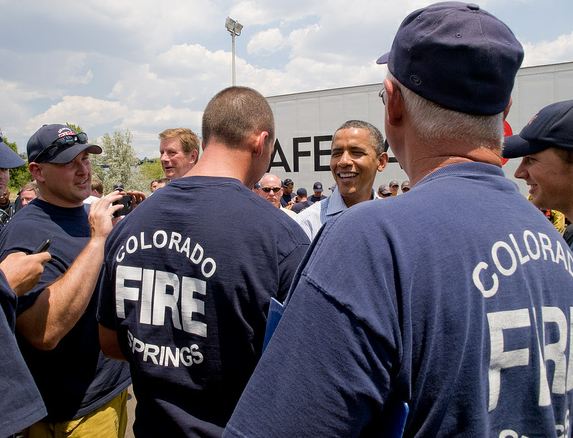The Departments of Interior and Agriculture are working closely, and quickly, with the Office of Personnel Management (OPM) to implement President Obama’s directive to allow seasonal firefighters to purchase health insurance. It could happen in a matter of days. Yes, the federal government can accomplish things in a hurry when motivated.
After the details are ironed out as to which categories of employees will be eligible, the only thing that has to happen to make it a reality is for OPM to publish a new interim rule. And they are planning on eliminating requirements for lengthy notification periods and public comments so that it would be effective immediately. Public comments will still be accepted while the interim rule is in effect, and it is possible there could be changes before it becomes final. Then the agency human resources folks will have to figure out how to implement the new rule, if and when it goes into effect.
The strategy OPM is planing to use is to latch on to an existing regulation. Currently the only circumstances under which seasonal or temporary employees may secure coverage under the Federal Employee Health Benefits (FEHB) program are those set forth in 5 U.S.C. 8906a, which entitles temporary employees who have completed one full year of continuous employment to secure coverage at their own expense. Seasonal firefighters, of course, do not work continuously for a year, so they do not qualify under this provision. OPM intends to change this to make firefighters eligible for the FEHB program.
But… and it’s a big BUT. The way we are interpreting this, is that firefighters would have to pay the full cost of the insurance premium, without any cost sharing from their employer, the federal government, which pays about 70 or 75 percent for career employees. While this would be a substantial expense for a GS-3 or GS-4 employee working for three or six months a year, it would not cost as much as purchasing health insurance on the open market, since firefighters could take advantage of the group pricing provided for a very large pool of customers, federal employees.
Another benefit to seasonal firefighters is that there would be no screening or rate adjustment for pre-existing health conditions. This could be huge a advantage for some family members of firefighters.
And we’re not done yet. In an early draft of the proposed rule, the OPM is considering allowing employees who routinely respond to hurricanes, floods, earthquakes, and other such emergencies, to enroll in a health benefits plan.
All of the above is subject to change. We won’t know anything for sure until the interim and ultimately the final rules are published.
What next?
While this rule change, allowing seasonal firefighters to enroll in the FEHB, is a major step in the right direction, it should not be the final answer. Seasonal firefighters do not make a lot of money and many will not be able to pay 100 percent of the insurance premium. Changes should be made to require their employing agency to pay their 70-75 percent share as is done for career employees. Or, make all firefighters career employees.



